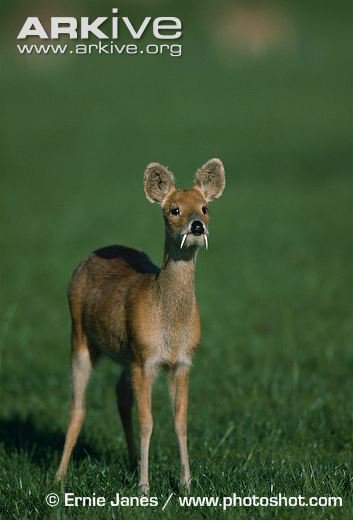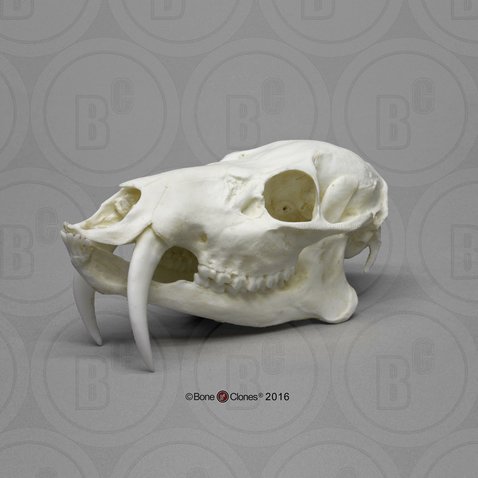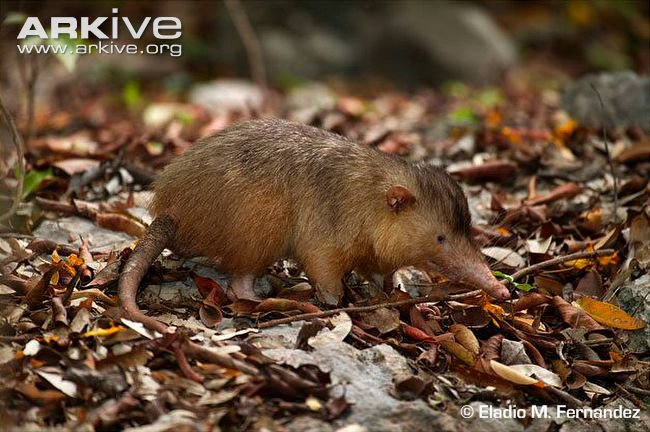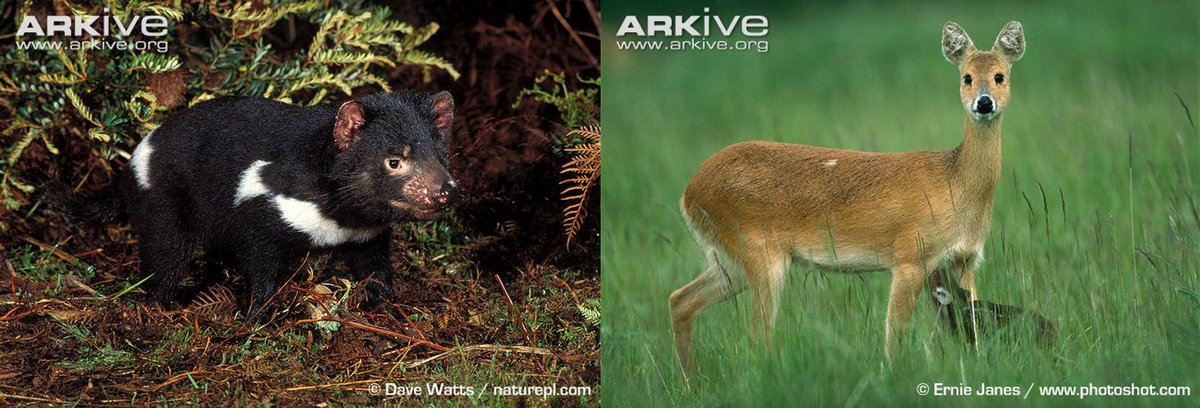NEXT UP: #5 seed Water deer ((Hydropotes inermis) vs. #12 seed solenodon (Solenodon paradoxus) #2018MMM
The Water Deer ranges from China to Korea, but has been imported to the UK and other parts of the world. The name refers to its preference for coastal plains, marshy areas, & riparian regions (map from: #SATword #2018MMM
Unlike many other deer they don't have antlers, their GREAT ADAPTATION are *mostly* in their mouth: The upper canines are "saber-like," which makes it look like something out of Bunnicula (Deernicula?) #2018MMM 





Water Deer weigh ~20-30 lbs & eat grasses & wetland plants. When running away, water deer tend to 'leap' (arkive.org/chinese-water-…) #2018MMM
Water deer are classified as Vulnerable by @IUCN w/ numbers declining bc they are viewed as a pest as they damage crops. The population seems to be in decline but hard to tell #2018MMM
The solenodon is a shrew-like ~2 lbs vemenous mammal living on the island of Hispaniola. Solenodon is one of the few venomous mammals & uses a grooved lower incisor to impart venom. Party fact: its name means grooved tooth #2018MMM 

The Hispaniola solenodon is highly endangered; eaten by dogs & other introduced species, it is so rare some folks consider it functionally extinct in most of the island. #2108MMM
A 1877 study, quoted in the fascinating Ligabue-Braun et al 2012 “Venomous mammals: A review” goo.gl/XPRfgW notes that bites from the lower incisor elicited inflammation, while those from upper incisors didn't #SufferingForScience #2018MMM
Considered a living fossil since it hasn't changed much in ~75 million years, the Solenodon is a "relic species". I think it looks like a miniaturized ROUS from Princess Bride #2018MMM
Solenodon eat mostly insects. As it has small eyes & is nocturnal, they rely more on sound than sight, making a wide range of vocalizations (including what is referred to as a "twitter" when it is feeding). Ref: goo.gl/s7YiqP #2018MMM
Tonight’s bout occurs in the marshy regions of the Korean penninsula. Solenodon is not used to this ecozone (nor happy to be awake duing the day), & according to TimeTree.org, the two species last shared a common ancestor ~89 million years ago #2018MMM
A male water deer comes along, looking for some plants to eat and startles the tiny Solenodon, who was just trying to find a place to nap #2018MMM
Solenodon lets out a series of weird sounds. Water Deer, scared by this noise, hops around aimlessly. Solenodon, nervous about what might happen, runs and hides from the vampire deer #2018MMM
WATER DEER DEFEATS SOLENODON!!! #2018MMM
• • •
Missing some Tweet in this thread? You can try to
force a refresh






